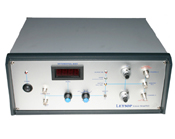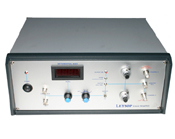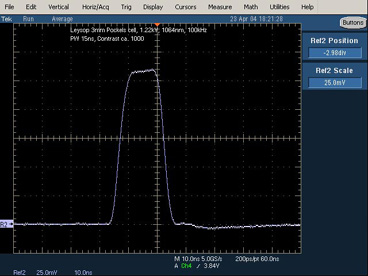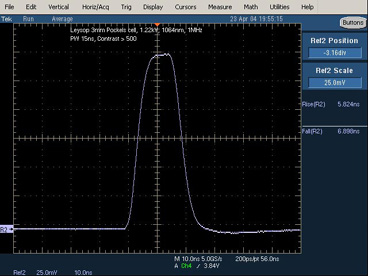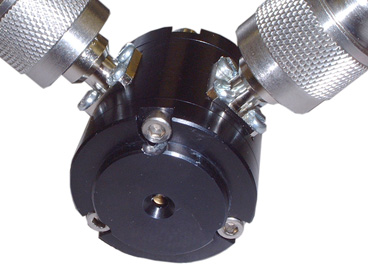RTP Pockels cells
RTP Pockels cells for High Repetition Rate Q-switching & Pulse-Picking
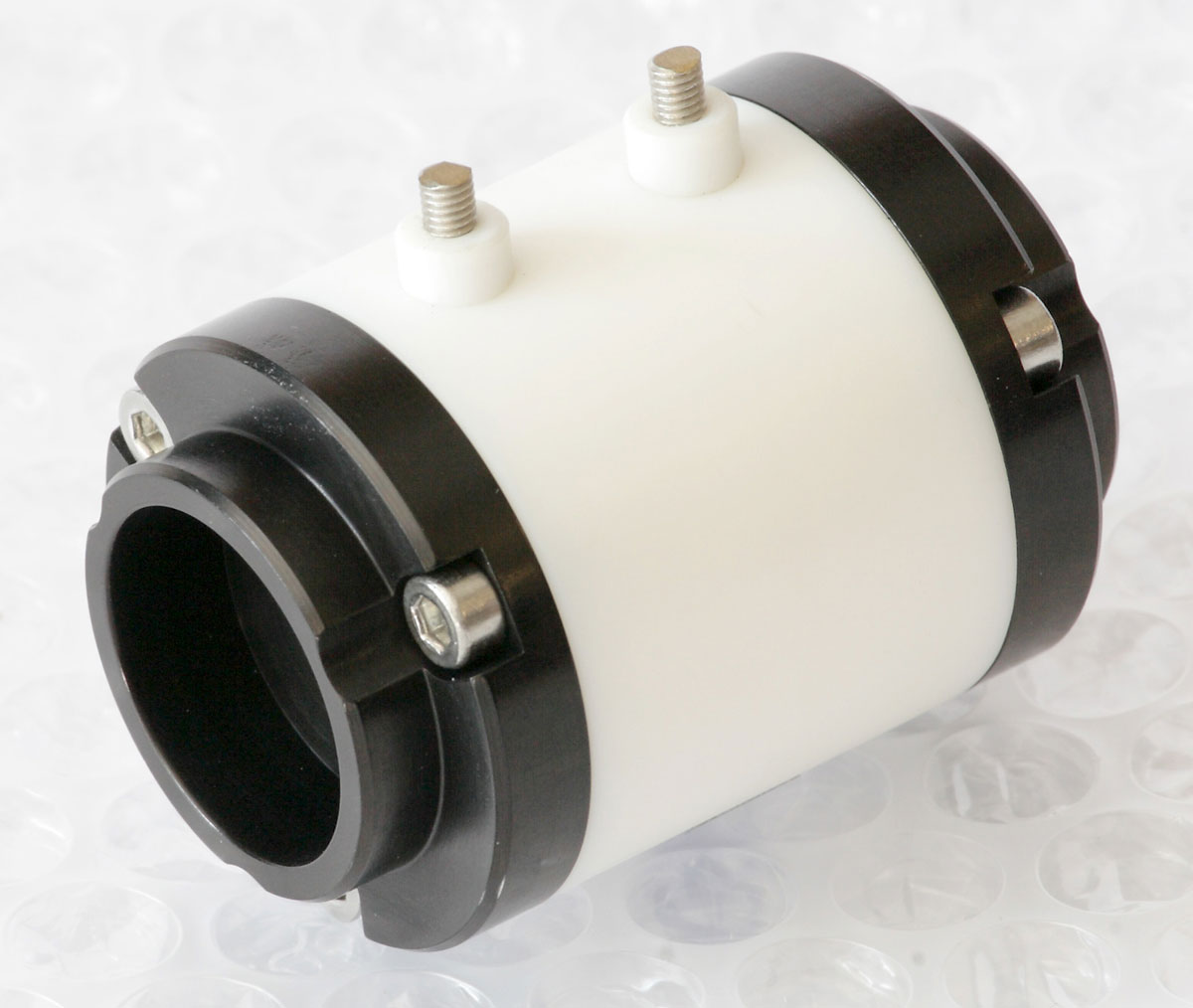
Background
In the field of electro-optics, there are very few occasions when something truly unique is developed. However, one such event was the advent of the new electro-optic material RTP. What you may ask is special about this material? Well for starters, it possesses a large electro-optic effect for light propagating along either the X direction or along the electro-optically more favourable Y direction (electric field in the Z direction). It features good optical transparency from around 400nm to over 4µm and very importantly for intra-cavity laser operation, offers a high resistance to optical damage with power handling ~1GW/cm2 for 1ns pulses at 1064nm.
So far so good, but what really sets this material apart from all the others is its essentially total lack of piezo-electric resonances all the way out to 200kHz and probably beyond. This at least has been the driver limited range of our measurement capability and we have no reason to doubt that it would perform beyond this (driver permitting). This exceptional performance opens up new possibilities for laser manufacturers previously limited to operation to 30kHz using BBO electro-optic Q-switches or forced to use much slower acousto-optic Q-switches (with their longer inherent Q-switched pulse lengths) for operation at higher frequencies. Now it is possible to break the 30kHz barrier without suffering excessive pulse lengths.
Comparisons with BBO are of course inevitable and we would not wish to give anyone the impression that RTP is the universal panacea for all laser applications. Rather, we believe that with an understanding of its limitations it can offer performance previously unattainable in electro-optic Q-switches. The main difference between RTP and BBO when used for Q-switching relates to the average power level at which the Q-switch is able to be used practically. That is not to say that is suffers from optical damage, far from it, its damage resistance is better than most EO materials and is only really bettered by BBO. It is more due to the nature of the implementation of the Q-switch itself.
Unlike BBO in which the optical propagation is along the optical axis of the material, in RTP the light propagation axis is either along the X or Y axes, both of which exhibit birefringence. The usual method of compensating for this is to use a pair of crystals, matched in optical thickness, which are then orientated at 90° to each other such that light which is polarized along the X axis say in the first crystal is then polarized along the Z axis of the second crystal. The "slow" ray in the first crystal then becomes the "fast" ray in the second and the total static birefringence is thus in theory cancelled in the composite crystal pair. This process is not however perfect and even with the best matched crystals one will experience a loss of birefringence cancellation when high optical powers are passed through the crystals. This is because of the albeit very small, but still significant optical absorption in the crystals which causes small differences in the local heating of the crystals. This upsets the compensation of the two crystals and unless some dynamically variable biasing arrangement is used a loss of extinction will occur which will degrade the laser performance. We believe therefore that RTP is most suited to moderate average power laser sources where high repetition rates and short Q-switched pulse lengths are more important than high average powers.
One major advantage over BBO is of course the much higher electro-optic effect. Typically BBO half wave voltages at 1064nm are ~7kV for a 3mm aperture BBO cell compared to just 1,300V for an equivalent sized RTP cell. Given their broadly similar capacitance the power consumption of the RTP cell is just over one tenth that of the BBO cell.
As with all new materials, we would encourage users to experiment with RTP to find out its strengths and limitations in real world systems.
Specifications
| Parameter | Value |
| Transmission at 1064nm | >98.5 - 99.0% |
| Apertures Available | 3, 4,6 and 9mm |
| Typical half wave voltages at 1064nm (X-cut) | 1,300V, 1,750V, 2,600V and 3,500V respectively |
| Contrast ratio | >20dB (can be ~30dB) |
| Acceptance Angle | >1° |
| Damage Threshold | >600MW/cm2 at 1064nm (t = 10ns) |
| Commonly Available Wavelengths: | 650-1000nm (BBAR), 1030/1064nm, 1550nm, 1950nm |
| Physical Dimensions: | See interface drawings in sidebar |
Compact Package Version
We can also offer the 3 and 4mm aperture options in a more compact, 25mm diameter housing.
In principle also the 6mm crystals will fit, but it is getting a bit tight for space inside and this is not preferred.

Applications
Aside from high repetition rate Q-switching, the other main application for RTP Pockels cells is in pulse picking. This is where a high repetition source, typically a ps or fs mode-locked laser, is reduced from the typical 80-100MHz down to a much lower rate. This could be for example to feed the input of a regenerative amplifier or to better suit the data rate for an experiment. In some cases the application is for a fixed repetition or in other cases there is a more random pattern to the picked pulses - both are possible. Pulse picking at very high rates can require high power drivers, even with the modest power requirements of RTP Pockels cells. However, we can recommend drivers from BME KG of Germany who have unrivalled expertise in high rate Pockels cell drivers and with whom we have demonstrated 20MHz continuous rate pulse picking systems.
We can also provide RTP Pockels cells in a format which is well suited to use with fast, 50Ω impedance pulse drivers for sub-ns rise time applications.

